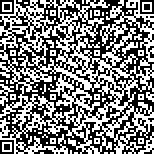| 摘要: |
| [摘要] 目的 观察选择性钙通道阻滞剂辅助治疗溃疡性结肠炎的近期疗效。方法 选择2015-02~2016-06该院收治的100例溃疡性结肠炎患者,采用随机数字表法将其分为观察组和对照组,每组50例。对照组予美沙拉嗪肠溶片,1.0 g/次,3次/d;Mayo评分≥7分者,加服双歧杆菌活菌散剂和醋酸泼尼松片。观察组在对照组基础上加用选择性钙通道阻滞剂尼莫地平片。两组疗程均为6周,进入缓解期后,调整药物剂量,两组均予美沙拉嗪肠溶片,0.5 g/次,3次/d,维持治疗3个月。比较两组的血沉(ESR)水平、C反应蛋白(CRP)水平、Mayo评分、Geboes指数评分、结肠黏膜评分和临床疗效。结果 在治疗6周后,观察组的临床缓解率高于对照组,开始获得缓解的时间快于对照组,差异有统计学意义(P<0.05)。治疗3个月后,观察组Mayo评分、Geboes指数评分及结肠黏膜评分均显著低于对照组(P<0.05),而且观察组的ESR、CRP水平也显著低于对照组(P<0.05)。在随访的6个月中,观察组复发率显著低于对照组(P<0.05)。结论 选择性钙通道阻滞剂辅助治疗溃疡性结肠炎可诱导病情缓解,改善治疗效果,并降低复发率。 |
| 关键词: 溃疡性结肠炎 选择性钙通道阻滞剂 缓解 复发 |
| DOI:10.3969/j.issn.1674-3806.2020.10.14 |
| 分类号:R 574.1 |
| 基金项目:开封市科技发展计划项目(编号:1903099) |
|
| Short-term efficacy of selective calcium channel blocker in adjuvant treatment of ulcerative colitis |
|
DONG Yong, FANG Xiao-he, WU Li-ping, et al.
|
|
Department of Gastroenterology, the First Affiliated Hospital of Henan University, Kaifeng 475001, China
|
| Abstract: |
| [Abstract] Objective To observe the short-term curative effect of selective calcium channel blocker adjuvant treatment on ulcerative colitis. Methods One hundred patients with ulcerative colitis admitted to our hospital from February 2015 to June 2016 were selected and divided into observation group and control group by the random number table method, with 50 cases in each group. The control group was given mesalazine enteric-coated tablets, 1.0 g per time, 3 times daily, and the patients with Mayo score ≥7 points were added with live bifidobacterium oral powder and prednisone acetate tablets. The observation group received the same treatment as the control group plus nimodipine tablets, a selective calcium channel blocker. Both of the two groups were treated for 6 weeks. After the patients entered the remission period, the drug dosages were adjusted. Both of the two groups were given mesalazine enteric-coated tablets, 0.5 g per time, 3 times daily for maintenance treatment of 3 months. The level of erythrocyte sedimentation rate(ESR), the level of C-reactive protein(CRP), Mayo score, Geboes Index score, colonic mucosa score and clinical efficacy were compared between the two groups. Results After 6 weeks of treatment, the clinical remission rate of the observation group was higher than that of the control group, and the observation group began to get remission faster than the control group, and the differences were statistically significant between the two groups(P<0.05). Three months after treatment, the Mayo scores, Geboes Index scores and colonic mucosal score of the observation group were significantly lower than those of the control group(P<0.05), and the levels of ESR and CRP of the observation group were also significantly lower than those of the control group(P<0.05). During 6 months of the follow-up, the relapse rate of the observation group was significantly lower than that of the control group(P<0.05). Conclusion Adjuvant treatment with selective calcium channel blocker can induce remission of ulcerative colitis, improve the treatment effect, and reduce the recurrence rate. |
| Key words: Ulcerative colitis Selective calcium channel blocker Remission Recurrence |

